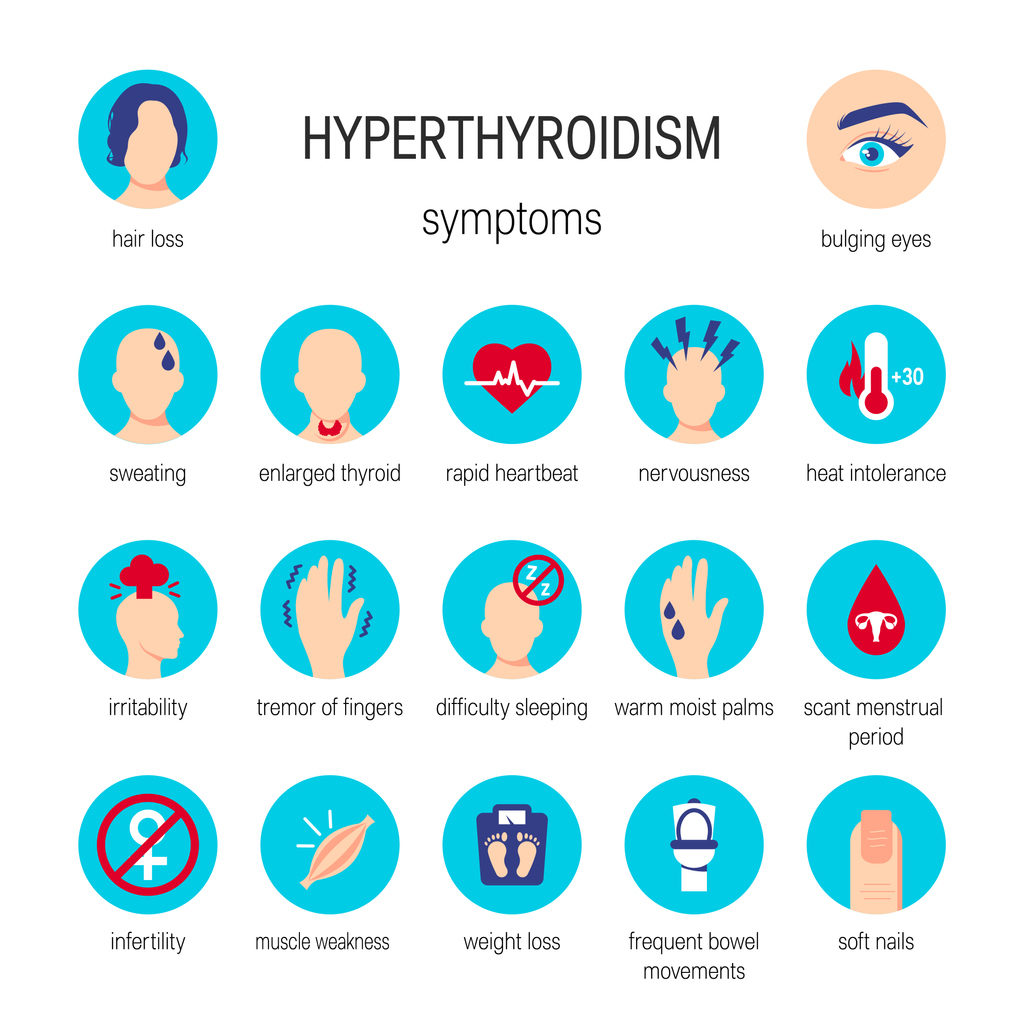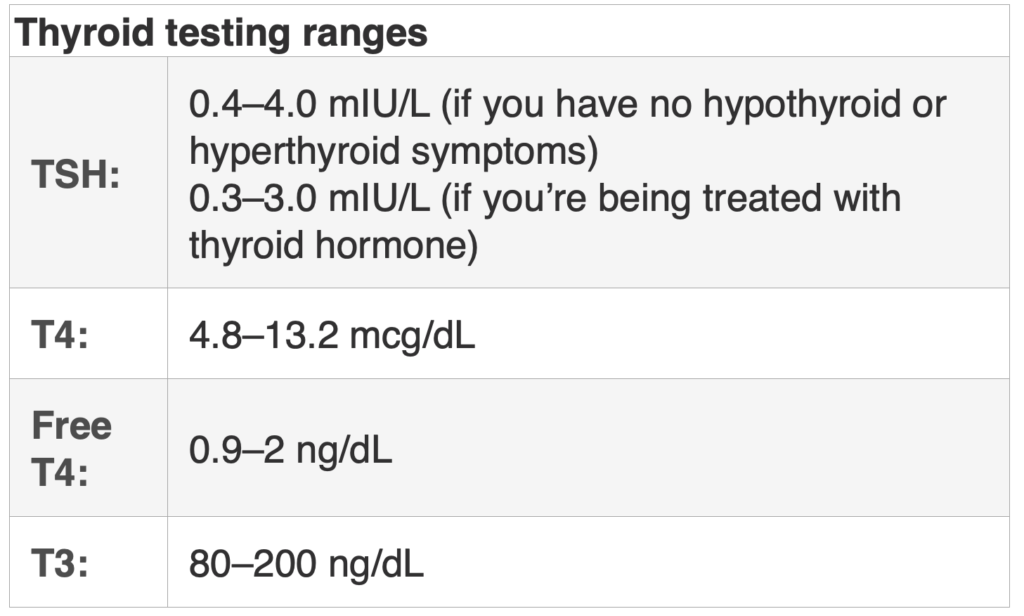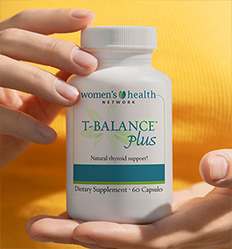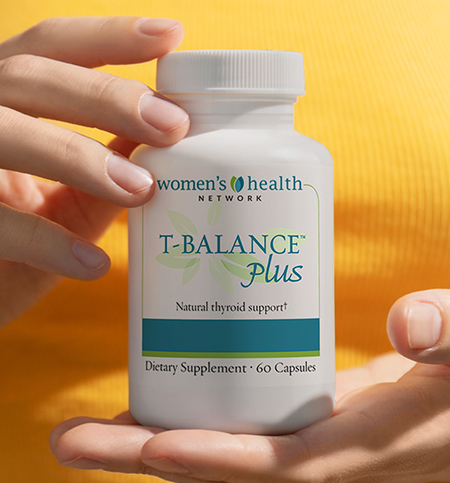If you’re just not feeling like yourself lately, you may be wondering if your symptoms are related to your thyroid or you have a specific thyroid problem like hypothyroidism or hyperthyroidism. Checking in on thyroid function is an important step in any woman’s health journey. Thyroid disease affects approximately 20 million people in the United States, with women over 30 at highest risk. It’s estimated that one in eight women will experience a thyroid disorder during her lifetime.

Understanding your risk for a thyroid disorder begins with a look at the two most common forms of thyroid hormone dysfunction: hypothyroidism and hyperthyroidism. While their names might sound the same, these thyroid disorders — and the symptoms they produce — are each very different.
Hypothyroid vs hyperthyroid
The thyroid is a small, butterfly-shaped gland that sits at the base of the neck just under the voice box. Hormones produced by the thyroid — triiodothyronine (T3) and thyroxine (T4) — have an enormous impact on your health, from regulating metabolism, body weight and energy levels to maintaining normal blood pressure, body temperature, and heart rate. Sometimes the body needs more thyroid hormones to carry out these functions, sometimes it needs less. The thyroid sends and receives signals to and from the brain to regulate when it should produce and release its hormones.
This thyroid-brain feedback loop works perfectly — until something happens to disrupt it. When there is a problem with thyroid hormone production or the release of hormones, one of two thyroid disorders can develop…
Hypothyroidism
Hypothyroidism occurs when your thyroid does not make enough thyroid hormones to fully support thyroid function. It is also called low thyroid or underactive thyroid. When your thyroid hormones are hypothyroid and too low to fully support thyroid function, all the processes in your body that your thyroid supports, like your metabolism, are slowed down. Weight gain and fatigue are often two primary signs of hypothyroidism.
Women can develop low or underactive thyroid for one or more reasons:
- Poor nutrition: Women may be experiencing deficiencies in nutrients needed for thyroid hormone production, including inadequate levels of iodine, selenium, tyrosine and B vitamins. Excess carbs and too little protein in the diet can also interfere with thyroid hormone production.
- Stress: Chronic stress produces excess stress hormones that can interfere with thyroid hormone production and dysregulate conversion and release of T3 and T4.
- Perimenopause: During perimenopause, fluctuations and imbalances in estrogen, progesterone and testosterone can interfere with the brain-thyroid feedback loop, throwing off messages about thyroid hormone production and reducing available T3 and T4 for our cells.
The most common cause of hypothyroidism in women is Hashimoto’s disease. Hashimoto’s disease is an autoimmune disease in which the immune system mistakenly attacks the thyroid. This attack damages the thyroid so that it no longer can produce enough hormones.
Other causes of hypothyroidism include:
- Hyperthyroidism treatment (radioactive iodine)
- Radiation treatment of certain cancers
- Thyroid removal
- Pregnancy (temporary low thyroid related to hormone changes in pregnancy)
Low thyroid, or hypothyroidism, is one of the most common forms of hormonal imbalance.
Hyperthyroidism
Hyperthyroidism is an overactive thyroid, meaning the thyroid gland produces more hormones than the body actually needs. Women are eight times more likely to experience this condition than men. When the thyroid produces excess hormones, cells in the body increase the rate at which they function, leading to issues like racing heart rate and anxious mood.
The most common cause of hyperthyroidism is the underlying autoimmune disorder of Graves’ disease. When Graves’ disease develops, the body produces antibodies that inflame and enlarge the thyroid gland, and may also cause eye swelling and a thickening of skin on the lower legs. Graves’ disease most often affects women in their 30s and 40s. It is also known as “toxic diffuse goiter.”
A less frequent cause is an unusual or “hot” nodule that appears within the thyroid. Also called “toxic nodular goiter,” these nodules stimulate production of thyroid hormones. Occasionally a virus will inflame the thyroid and cause a temporary episode of hyperthyroidism. This condition is called thyroiditis, and usually resolves on its own.
Women also get hyperthyroidism from taking too much thyroid medication that contains T3. Anyone taking thyroid supplements should be closely monitored for this reason.
Hypothyroidism vs hyperthyroidism symptoms
Often the best way to begin detecting if you have hypothyroidism or hyperthyroidism is to simply listen to your body. Symptoms often come in the form of tell-tale signs that, once you know what to look for, can be readily spotted. Look through the charts below to see if you fit into either category.
Symptoms of hyperthyroidism
- Heart palpitations; accelerated heart rate
- Chest pain
- A feeling of being too warm all the time
- Nervousness and trembling
- Insomnia despite feeling exhausted
- Breathlessness
- Diarrhea and GI upset
- Increased appetite
- Light or absent menstrual periods; infertility
- Weight loss
- Muscle deterioration
- Warm, moist skin
- Hair loss
- Bulging eyes, “spacy” gaze
- Heightened anxiety, irritability, moodiness or depression
Symptoms of hyperthyroidism can be similar to those of other conditions, including anxiety disorders or mania-like behavior. So, rather than assume it is just a mood disorder, thyroid function should always be checked to rule out hyperthyroidism when a woman experiences new symptoms of anxiety, panic attacks, or hyperactivity of any kind.

Hyperthyroid symptoms can also worsen gradually over time. Many women have had overactive thyroid for months or years but don’t recognize the symptoms until they become more severe. Older women may lose weight or become depressed without having any of the other hyperthyroidism symptoms.
Symptoms of hypothyroidism
Symptoms of hypothyroidism can develop slowly, often over several years. At first, you may feel tired and sluggish. Later, you may develop other signs and symptoms of a slowed-down or sluggish thyroid. Hypothyroidism symptoms include:
- Severe fatigue
- Loss of energy
- Weight gain
- Increased sensitivity to cold
- Constipation
- Dry skin
- Dry and brittle hair
- Thinning eyebrows
- Weight gain
- Puffy face
- Hoarseness
- Muscle weakness and muscle pain
- Yellowing of the palms of the hands and soles of feet
- Increased cholesterol levels
- Irregular menstrual periods
- Infertility
- Worsened PMS symptoms
- Fibrocystic breasts
Low or sluggish thyroid function shares symptoms with many other endocrine disorders and imbalances. Finding patterns in common symptoms will help confirm if your thyroid is the root cause.

Hyperthyroidism vs hypothyroidism — which is worse?
Hypothyroidism is much more common in women than hyperthyroidism. It’s estimated that women are 5 times more likely to experience low thyroid than overactive thyroid.
In situations where either thyroid disorder is allowed to become severe enough, women can experience serious health consequences. Hypothyroidism can lead to heart disease. Hyperthyroidism can contribute to irregular heartbeat and high blood pressure and related cardiac issues. The good news? When either type of thyroid disorder is detected in its earlier stages, natural and non-invasive steps can be taken to relieve symptoms and restore healthy thyroid function.
Hypothyroidism vs hyperthyroidism: diagnosis and natural treatment
If you suspect you have a thyroid issue, we encourage you to tune into your body now because any thyroid-related symptom is a sign for you to pay attention and take action. Waiting for your symptoms to get worse creates the potential that you could end up requiring long term thyroid medication. Starting early and with the most effective, natural approach available is a winning combination for supported thyroid health.
Hyperthyroidism vs hypothyroidism TSH levels
To get a baseline on what’s going on, some women decide to have their thyroid levels tested by their doctor via a thyroid panel blood test. The TSH (thyroid stimulating hormone) and T4 tests are two common measures used to check thyroid function. Ideally, thyroid levels should be in the middle of the ranges listed below. Generally, a low TSH level—below 0.5 mU/L—and higher free T4 levels indicates an overactive thyroid. A higher TSH level can indicate low thyroid.

Be aware that not all doctors interpret thyroid results in the same way. Many times women who suspect low thyroid issues are told by their doctors that testing results came back “normal,” when in reality they are in the range of “subclinical hypothyroidism” — the upper end of normal where thyroid symptoms are present and action should be taken to support the thyroid. Also, trends in your thyroid function – if levels are creeping up or down over time – are always important to know about.
Natural treatments for hyperthyroidism and hypothyroidism
If you’ve noticed signs that your thyroid function is less than optimal, fortunately there’s a lot you can do to restore balance to the thyroid. For hypothyroidism, natural remedies for thyroid support include:
Eat thyroid-supporting foods
Research shows that the thyroid needs specific vitamins and minerals to function. Minerals like iodine, selenium and zinc, and vitamins A, C, D and B can all be found in everyday foods and your thyroid relies on them to work well. Try eating more sea vegetables for a good source of iodine or make a salad with thyroid-friendly nutrients. (Find more whole foods that support the thyroid in our article, Eating for thyroid health.)
Try targeted supplements to support healthy thyroid function
Certain herbs and minerals can address key aspects of thyroid dysfunction and support thyroid health. In addition to iodine, selenium is an everyday nutrient that the thyroid craves in the right forms and dosages. Certain plants contain compounds that can help too. Hops have been found to enhance the uptake of iodine, and coleus mimics the effect of TSH. Ashwagandha helps relieve thyroid symptoms by supporting thyroid hormone balance. T-Balance Plus is one supplement with all of these ingredients and more to support your thyroid naturally.
Support the thyroid through regular exercise
Studies show that thyroid hormones can increase when your heart rate rises with exercise. Regular physical activity reminds your thyroid to stay alert because it has work to do while you’re moving. Walking, dancing, sports, and especially yoga can all support your thyroid health.
Natural support for overactive thyroid
For women concerned about overactive thyroid, herbs that support restored thyroid function include lemon balm and bugleweed. Studies on both herbs indicated they may block or decrease thyroid-stimulating hormone (TSH) and reduce T3 and T4 hormone levels.
Hypo or hyperthyroidism — your thyroid health deserves your attention
What are your next steps for supporting your thyroid? We encourage you to take our free Thyroid Health quiz to help you understand your mix of symptoms and get recommendations for the best way to restore thyroid health.












